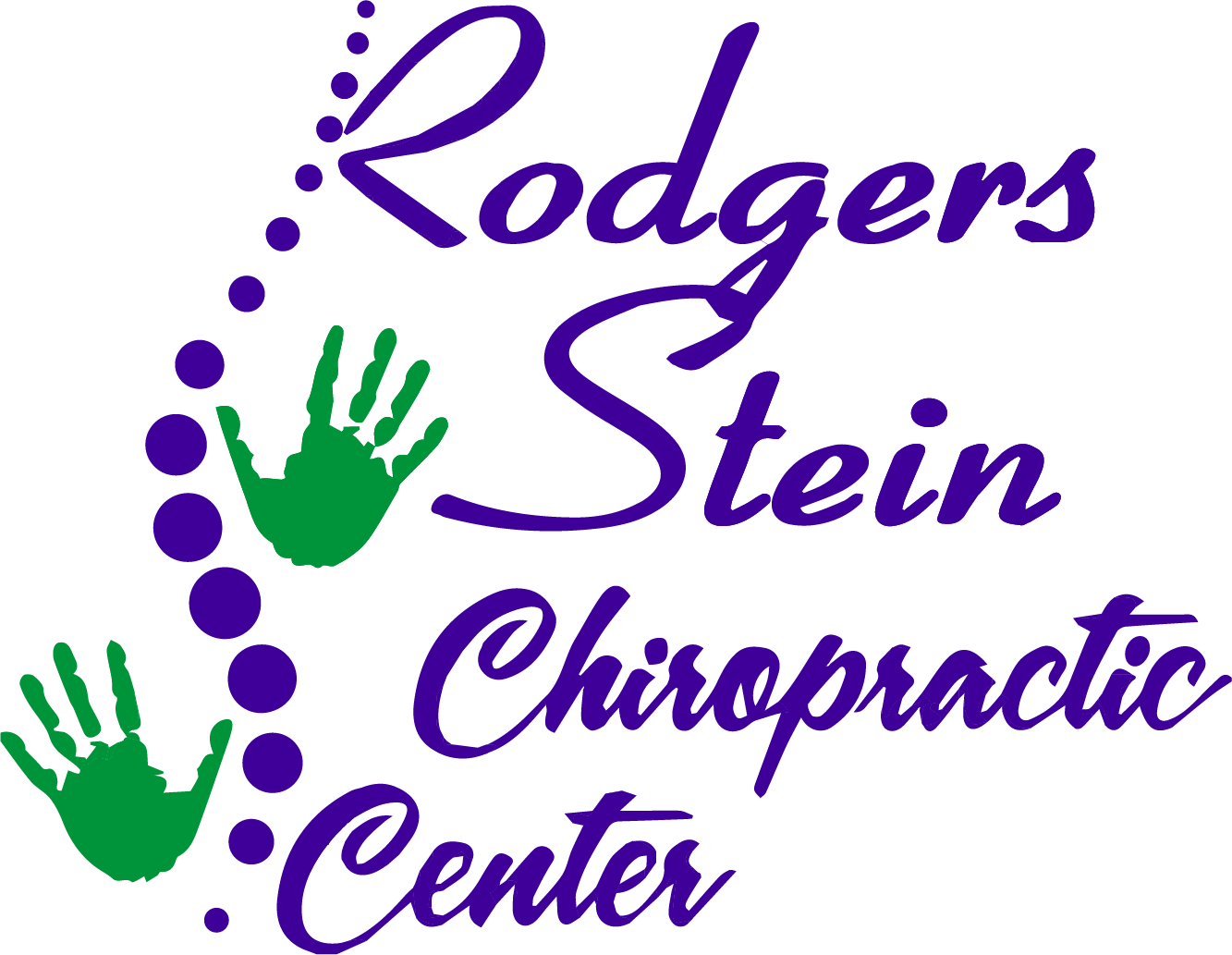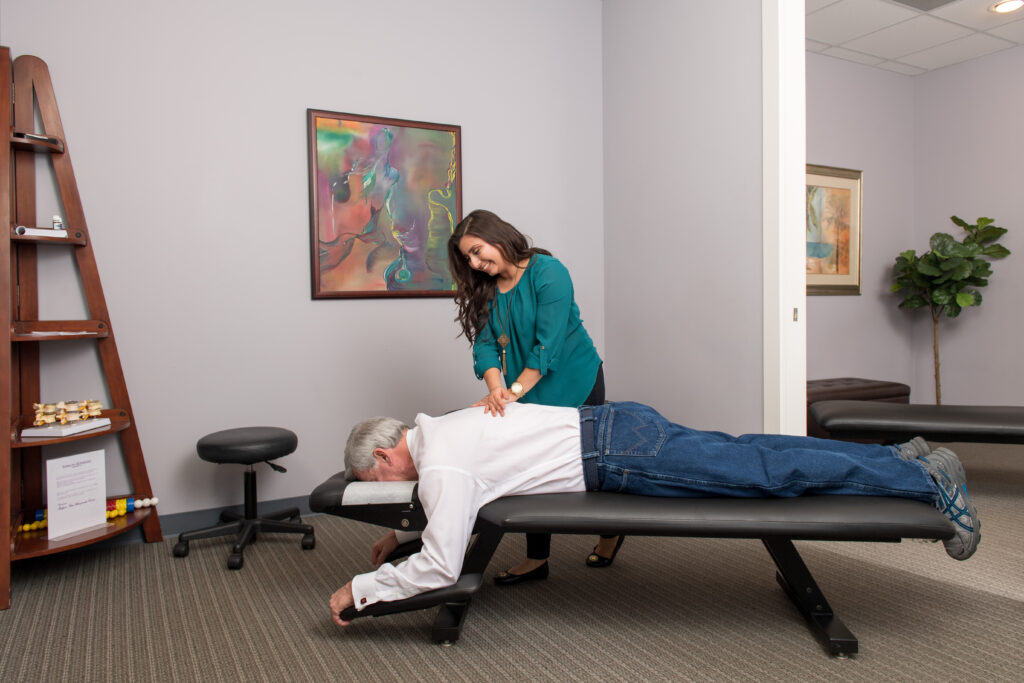If you're dealing with back pain in Conroe, you might be surprised by the range of natural remedies available to help alleviate your discomfort. From the anti-inflammatory benefits of turmeric and ginger to the soothing effects of essential oils, there are several options worth considering. You may also find that practices like yoga and tailored physical therapy can greatly improve your condition. But what about lesser-known remedies that could be just as effective? Let's explore some of the most promising solutions that could transform your approach to managing back pain.
Herbal Remedies
When it comes to easing back pain, herbal remedies can be a natural ally. You might find that certain herbs provide relief by reducing inflammation, relaxing muscles, or even alleviating stress.
For instance, turmeric is known for its potent anti-inflammatory properties, thanks to its active compound, curcumin. Incorporating turmeric into your diet, whether in meals or as a supplement, may help soothe your achy back.
Another powerful herb is ginger. Like turmeric, ginger also boasts anti-inflammatory benefits. You can enjoy ginger tea or add fresh ginger to your dishes to harness its healing properties.
Additionally, you may want to take into account willow bark, which has been used for centuries to treat pain. It contains salicin, a chemical similar to aspirin, making it a natural choice for back pain relief.
Devil's claw is another option worth exploring. This herb has shown promise in reducing pain and improving mobility in people with lower back issues. You can find it in capsules or teas, making it easy to incorporate into your routine.
Don't overlook the benefits of cayenne pepper either. Its active component, capsaicin, can help block pain signals when applied topically as a cream.
As with any remedy, it's crucial to consult with a healthcare professional before starting any new herbal treatments, especially if you're on medication.
Essential Oils
Herbal remedies aren't the only natural options available for relieving back pain; essential oils can also play a significant role in your pain management routine. These highly concentrated plant extracts contain potent properties that can help alleviate discomfort and promote relaxation.
One of the most popular essential oils for back pain is peppermint oil. Its cooling effect can provide immediate relief by increasing circulation and reducing inflammation. Simply dilute a few drops in a carrier oil, like coconut or olive oil, and gently massage it into the affected area.
Another effective option is lavender oil. Known for its calming and soothing properties, lavender can help ease muscle tension and promote a sense of relaxation. Adding a few drops to your bath or using it in a diffuser can create a tranquil environment, which is essential when dealing with pain.
If you're looking for something with a warming effect, consider using ginger oil. It can stimulate blood flow and reduce stiffness in your back. Mix it with a carrier oil and apply it directly to the painful areas for relief.
Finally, eucalyptus oil offers anti-inflammatory benefits and can help alleviate pain. You can use it in a steam inhalation or mix it with a carrier oil for topical application.
Incorporating essential oils into your routine can provide natural relief for back pain. Just remember to conduct a patch test first and consult with a healthcare professional if you have any concerns.
Physical Therapy Options
When it comes to managing back pain, physical therapy can offer effective solutions tailored just for you.
Personalized exercise programs can help strengthen your back, while manual therapy techniques provide immediate relief and improve mobility.
Exploring these options can empower you to take control of your pain and enhance your overall well-being.
Personalized Exercise Programs
While many people seek quick fixes for back pain, personalized exercise programs through physical therapy can offer long-lasting relief. These programs are tailored specifically to your unique needs, addressing the root causes of your discomfort rather than just masking the symptoms.
A physical therapist will assess your condition, focusing on your strength, flexibility, and overall movement patterns. Based on this assessment, they'll design a program that includes targeted exercises to strengthen the muscles supporting your spine. This not only alleviates pain but also helps prevent future injuries.
Incorporating stretching and strengthening exercises can improve your range of motion and reduce stiffness. You'll learn proper techniques to perform daily activities without straining your back. Consistency is key, so sticking to your program is essential for seeing results.
Additionally, personalized exercise programs often include education on posture and body mechanics, empowering you to make better choices in your daily life. By actively participating in your recovery, you'll not only experience relief but also gain valuable tools to maintain a strong and healthy back.
Embrace this proactive approach, and you might just find the relief you've been seeking.
Manual Therapy Techniques
Manual therapy techniques are an effective option within physical therapy that can considerably alleviate back pain. These hands-on approaches focus on manipulating the muscles, joints, and connective tissues, helping restore mobility and reduce discomfort.
When you work with a skilled therapist, you can experience significant improvements in your condition. Here are some common manual therapy techniques you might consider:
- Joint Mobilization: Gentle movements to improve joint function and reduce stiffness.
- Soft Tissue Manipulation: Targeting tight muscles and fascia to relieve tension and pain.
- Myofascial Release: Applying pressure to release restrictions in the fascia surrounding muscles.
- Trigger Point Therapy: Focusing on painful knots in muscles to decrease pain and improve functionality.
- Craniosacral Therapy: A gentle technique that promotes relaxation and eases tension in the central nervous system.
Incorporating these techniques into your treatment plan can enhance your recovery process.
Regular sessions may lead to improved flexibility, reduced pain levels, and a better overall quality of life. Always consult a qualified therapist to determine which methods are best suited for your specific needs.
Acupuncture Benefits
If you're struggling with back pain, acupuncture might offer you some relief.
This ancient practice not only targets pain relief but also promotes a holistic healing approach, addressing both body and mind.
Pain Relief Mechanism
Acupuncture offers a unique approach to pain relief, targeting specific points in the body to alleviate discomfort. This ancient practice stimulates the nervous system, promoting the release of natural pain-relieving chemicals like endorphins.
By enhancing blood flow and balancing energy, acupuncture helps you feel better physically and mentally.
Here are some key benefits of acupuncture for pain relief:
- Pain Reduction: Many people experience significant decreases in back pain after just a few sessions.
- Improved Mobility: Acupuncture can help restore flexibility and range of motion in your back.
- Reduced Inflammation: It can lower inflammation levels, which is often a contributor to chronic pain.
- Stress Relief: The treatment promotes relaxation, helping to reduce tension that can exacerbate pain.
- Personalized Treatment: Each session can be tailored to your specific pain areas and overall health needs.
Holistic Healing Approach
Holistic healing embraces the idea that your body, mind, and spirit work together, and acupuncture plays an essential role in this interconnected approach. When you experience back pain, acupuncture can help by stimulating specific points along your body's energy pathways, known as meridians. This process encourages the flow of energy, or Qi, helping to restore balance and alleviate discomfort.
You might find that acupuncture not only targets your physical pain but also addresses emotional stress and tension, which can contribute to your discomfort. Many people report an improved sense of well-being after sessions, feeling more relaxed and centered. This holistic perspective means that treating your back pain can enhance your overall health.
Additionally, acupuncture can help reduce inflammation and improve blood circulation, further speeding up the healing process. It's a drug-free option that can be easily integrated into your routine.
Whether you're dealing with chronic pain or a recent injury, considering acupuncture as part of your healing journey can be beneficial. By embracing this holistic healing approach, you empower yourself to take charge of your health and find relief from back pain naturally.
Yoga and Stretching
Yoga and stretching can be powerful allies in your battle against back pain. These practices not only improve flexibility and strength but also promote relaxation and stress relief, which are essential for managing pain.
By incorporating yoga and stretching into your routine, you can enhance your overall well-being and alleviate discomfort in your back.
Here are some key benefits of yoga and stretching for back pain relief:
- Increased Flexibility: Regular stretching helps loosen tight muscles, making it easier to move and reducing strain on your back.
- Strengthened Core Muscles: Many yoga poses target your core, providing support to your spine and helping prevent injuries.
- Improved Posture: Yoga encourages awareness of your body alignment, which can lead to better posture and less strain on your back.
- Stress Reduction: Deep breathing and mindfulness in yoga can help lower stress levels, reducing muscle tension and pain.
- Enhanced Blood Flow: Stretching promotes circulation, delivering nutrients to your muscles and aiding in recovery.
To get started, consider enrolling in a local yoga class or following along with online videos.
Focus on poses like Cat-Cow, Child's Pose, and Downward Dog, which are particularly beneficial for your back.
Remember to listen to your body and modify poses as needed. Consistency is key, so aim to practice regularly.
With time, you'll likely notice a significant improvement in your back pain and overall flexibility.
Chiropractic Care
If you're looking for additional ways to relieve back pain, chiropractic care can be an effective option. Chiropractors focus on diagnosing and treating musculoskeletal issues, particularly those related to the spine. By using hands-on spinal manipulation and other techniques, they aim to restore proper alignment, improve mobility, and alleviate discomfort.
When you visit a chiropractor, they'll first evaluate your condition through a physical examination and possibly some imaging tests. This helps them identify the root cause of your pain, ensuring you receive targeted treatment. They may develop a personalized plan that includes adjustments, mobilizations, and other complementary therapies. Each session aims to relieve tension, improve circulation, and promote healing in your back.
One of the main benefits of chiropractic care is its non-invasive nature. You won't need to rely on medications that can mask your pain or lead to unwanted side effects. Instead, you'll focus on natural methods to support your body's ability to heal itself. Many patients report significant improvements in their pain levels and overall function after just a few sessions.
Moreover, regular chiropractic visits can help prevent future back pain. By maintaining proper spinal alignment, you can reduce the risk of injury and improve your posture. This proactive approach may lead to enhanced overall wellness, allowing you to enjoy daily activities without discomfort.
If you're seeking a holistic approach to back pain relief, consider incorporating chiropractic care into your routine.
Dietary Changes
Making smart dietary changes can greatly impact your back pain recovery.
By incorporating anti-inflammatory foods and staying well-hydrated, you can support your body's healing process.
Plus, ensuring you get essential nutrients helps strengthen your muscles and bones, paving the way for better back health.
Anti-inflammatory Foods Benefits
Incorporating anti-inflammatory foods into your diet can considerably alleviate back pain and promote overall well-being.
These foods help reduce inflammation in your body, which can lead to less discomfort and improved mobility. By making simple dietary changes, you can enhance your overall health and manage your back pain more effectively.
Here are five anti-inflammatory foods you should consider adding to your meals:
- Fatty fish (like salmon and mackerel) – Rich in omega-3 fatty acids, they help reduce inflammation.
- Leafy greens (such as spinach and kale) – Packed with antioxidants, they support your immune system.
- Berries (like blueberries and strawberries) – High in vitamins and antioxidants, they combat oxidative stress.
- Nuts (especially walnuts and almonds) – Provide healthy fats and proteins that help reduce inflammation.
- Turmeric – Contains curcumin, a compound known for its anti-inflammatory properties.
Hydration's Role in Recovery
While anti-inflammatory foods play a significant role in reducing back pain, hydration is equally important for recovery and overall health. Staying well-hydrated helps maintain the elasticity of your spinal discs, which can become stiff and contribute to discomfort.
When your body lacks water, it can affect your muscles and joints, leading to increased strain and pain. Drinking enough fluids guarantees that your muscles function properly and helps reduce the risk of cramps and stiffness. Aim for at least eight glasses of water a day, but if you're active or live in a hot climate, you may need even more.
Listening to your body's signals is vital—thirst is a clear indicator that you need to hydrate. You can also incorporate hydrating foods into your diet, such as cucumbers, watermelon, and oranges. These not only contribute to your fluid intake but also provide essential vitamins and minerals that support overall well-being.
Essential Nutrients for Healing
When it comes to healing back pain, the right nutrients can make a significant difference in your recovery journey. By adjusting your diet, you can support your body's natural healing processes and reduce inflammation.
Here are some essential nutrients to include:
- Omega-3 Fatty Acids: Found in fatty fish like salmon and walnuts, these help reduce inflammation.
- Magnesium: This mineral is vital for muscle function and can be found in spinach, nuts, and whole grains.
- Vitamin D: It supports bone health, so consider getting some sunlight or eating fortified foods.
- Calcium: Essential for strong bones, you can get calcium from dairy products, leafy greens, and fortified plant-based milks.
- Antioxidants: Foods rich in antioxidants, like berries and dark chocolate, help combat oxidative stress and promote healing.
Incorporating these nutrients into your daily meals can enhance your recovery.
Consider consulting a nutritionist to create a plan tailored to your specific needs.
Hot and Cold Therapy
Hot and cold therapy can be a game-changer for managing back pain. When you apply heat to your back, it helps relax tense muscles, increases blood flow, and promotes healing. You might find a warm towel, heating pad, or even a hot shower to be effective.
Just be sure not to use heat for more than 20 minutes at a time to avoid overheating the skin.
On the other hand, cold therapy is equally important, especially for reducing inflammation and numbing sharp pain. You can use an ice pack, a bag of frozen peas, or a cold compress.
Apply it to the affected area for about 15-20 minutes. This can be particularly helpful right after an injury or flare-up, as it constricts blood vessels and reduces swelling.
You can switch between heat and cold therapy to maximize relief. Start with cold therapy to reduce inflammation and follow up with heat to ease muscle tension.
Listen to your body, and adjust the duration and temperature based on what feels best for you.
Mindfulness and Meditation
Incorporating mindfulness and meditation into your routine can be a powerful way to alleviate back pain. These practices help you focus on the present moment, reducing stress and tension that often contribute to discomfort.
By calming your mind and body, you can promote relaxation and improve your overall well-being.
Here are some effective techniques you can try:
- Deep Breathing: Take slow, deep breaths to help release muscle tension in your back. Inhale deeply through your nose, hold for a moment, and exhale slowly through your mouth.
- Body Scan: Lie down in a comfortable position and mentally scan your body from head to toe. Notice areas of tension and consciously relax them.
- Guided Imagery: Picture a peaceful place, like a beach or forest. Visualizing this calming environment can help distract you from pain and promote relaxation.
- Mindful Walking: Take a slow, deliberate walk while focusing on each step. Pay attention to how your feet connect with the ground and the sensations in your body.
- Meditation Apps: Consider using apps like Headspace or Calm for guided meditation sessions specifically designed to alleviate pain and promote mindfulness.
Local Community Resources
Many communities offer valuable resources to help you manage back pain effectively. In Conroe, you'll find a variety of local options tailored to your needs.
Start by checking out community health centers, which often provide workshops and classes focused on pain management techniques. These sessions might cover everything from gentle stretching exercises to posture correction, all aimed at reducing discomfort.
Local libraries can be another treasure trove of information. They typically have books and materials on natural remedies for back pain, including guides on yoga and physical therapy exercises. You can also find community bulletin boards with announcements about upcoming health fairs or free seminars on back care.
Consider joining a support group in your area. Connecting with others who experience similar challenges can be incredibly helpful. Sharing experiences and tips not only provides emotional support but can also introduce you to new natural remedies.
Don't overlook local fitness studios or wellness centers that offer classes in Pilates, yoga, or tai chi. These practices are great for building core strength and increasing flexibility, which can alleviate back pain over time.
Some centers may even offer introductory classes for free or at a reduced rate, making it easier for you to explore your options.
Lastly, don't hesitate to reach out to local chiropractors or physical therapists who might provide community workshops. They can offer hands-on advice and specific exercises tailored to your situation, helping you navigate your journey toward pain relief.
Conclusion
Incorporating these natural remedies for back pain can lead to significant relief and improved well-being. By exploring herbal options, essential oils, and engaging in yoga or physical therapy, you're taking important steps toward better back health. Don't forget the benefits of mindfulness and dietary changes, as they can enhance your overall experience. With local resources available, you have plenty of support. Embrace these approaches, and you'll be on your way to a more comfortable, active life in Conroe!



